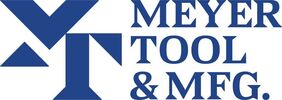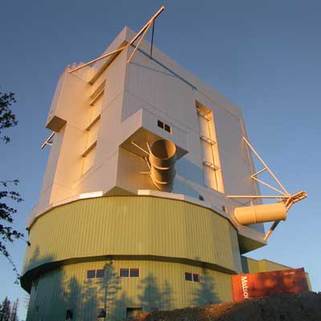Call: 708-425-9080
Meyer manufactures dewar assembly for the Large Binocular Telescope
Cold Facts (Summer 2006, Vol. 22, No. 3)
|
Meyer Tool & Mfg. has completed five CCD Dewar Canister Assemblies for the Ohio State University (OSU). The Dewar Canisters are to be used to provide cryogenic cooling to the Charge-Coupled Device (CCD) cameras in the Multi-Object Double CCD Spectrograph and Imager (MODS) being designed and built by OSU for the Large Binocular Telescope (LBT).
Meyer has a long history of supporting the astronomy and astrophysics community with aluminum dewars, vacuum chambers and cryostats. The five identical Dewar assemblies consist of an inner aluminum liquid nitrogen vessel with cold finger, a copper radiation shield and an aluminum vacuum vessel. The assemblies also contain aluminum/stainless steel bimetal joints, thin walled bellows and tubing piping spools, and modified valves. OSU chose to use a dewar design to provide cryogenic cooling due to vibrational stability and long-term reliability. Using the OSU-provided CAD model and drawings, Meyer developed the weld plan and details for the dewars and efficiently completed them ahead of schedule. The dewars were cold shocked by completely filling the inner vessel with liquid nitrogen and tested by mass spectrometer leak testing all pressure and vacuum barrier components to 1x10-9 stdcc/sec helium by Meyer. OSU engineers Tom O'Brien, Mark Derwent and Bruce Atwood were responsible for the design of the CCD dewars. O'Brien and Derwent visited Meyer in late December 2005 to view the assembly of the dewars. The MODS CCD detectors will be enclosed in the side-looking dewars attached to the camera middle bulkhead behind the filter wheel. The detectors will be cooled with liquid nitrogen via an aluminum cold finger welded to the inner vessel. The dewars are designed for a 36-hour hold time, the expected thermal load is 10 watts, expected LN2 usage is 5 liters/day. The Large Binocular Telescope (LBT) project is a partnership of American and European institutions to build the world's largest telescope on a single mount. The Ohio State University Astronomy Department's contribution to the project, the Multi-Object Double Spectrograph and Imager (MODS), will be a facility instrument for the entire LBT community. OSU's primary use for the MODS instrument is a set of observational programs designed to address several key research topics on the evolution of galaxies and structure in the Universe. OSU will devote a significant fraction of their LBT observing time to these programs. MODS will provide low- and medium-resolution spectroscopy (R=200-2000) and imaging across the entire 330-1100nm band in a 6x6-arcminute field of view. Multi-object spectroscopy is accomplished using custom-machined focal-plane slit masks fed into the beam by a 25-position mask cassette. A beam selector below the slit carries a dichroic that splits the incoming beam into separate red- and blue-optimized channels, each with its own collimator, grating, camera and detector, allowing simultaneous operation across the entire CCD band. The beam selector can also direct light into the red or blue channels alone, providing blue-/red-only modes to extend wavelength coverage across the dichroic notch as required. The first two-channel MODS will be deployed at the Gregorian focus of LBT M1 in 2007 (following commissioning of the active secondary system), with the second two-channel MODS system deployed around the time LBT goes into full science operations a little over a year later. MODS is funded by the Ohio State University with major support provided by grants from National Science Foundation's Division of the Astronomical Sciences Advanced Technologies and Instrumentation (AST-9987045) and NSF/NOAO TSIP Programs, and with matching funds provided by the Ohio State University Office of Research and the Ohio Board of Regents. Graduate students have been supported by the David G. Price Fellowship in Astronomical Instrumentation. |




